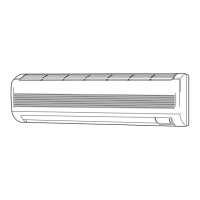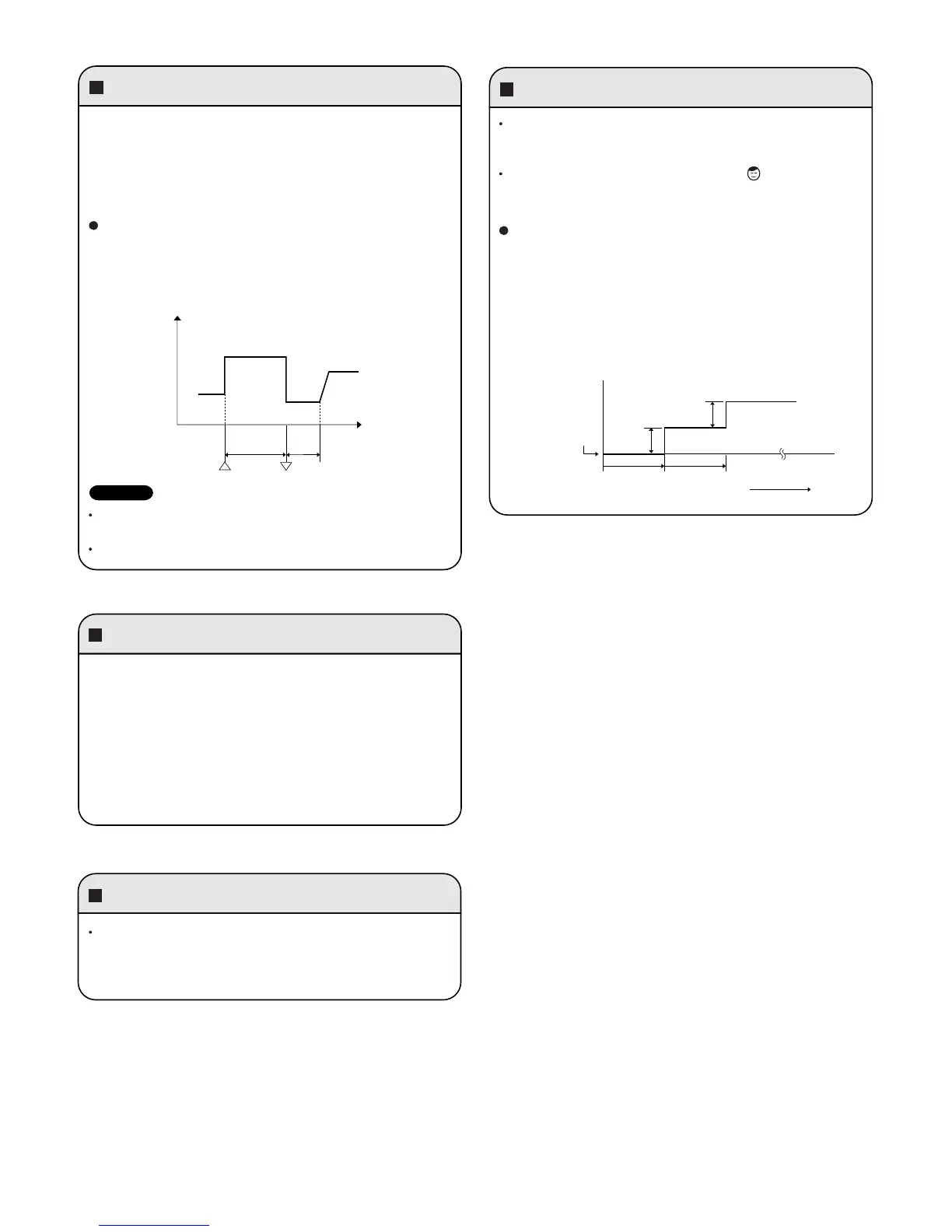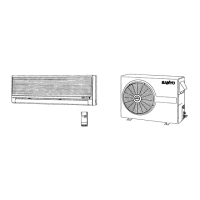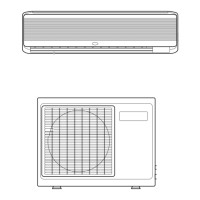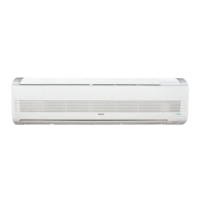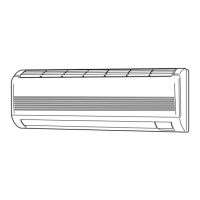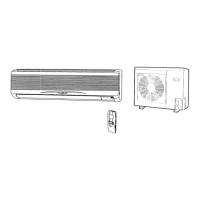HIGH POWER
NIGHT SETBACK
Lamp colors
Timer backup
This function acts to raise the power but keeps the AC system in
the same operating mode.
This function is set with the HIGH POWER button on the remote
controller.
(It can be set regardless of the temperature and fan speed
settings.)
HIGH POWER operation from remote controller
The unit operates at maximum output for 30 minutes,
regardless of the desired temperature.
The fan speed is 1 step above "High."
OPERATION lamp
When HIGH POWER operation ends, the unit operates at low
Hz for 5 minutes, regardless of the thermostat OFF conditions.
When in DRY mode, operation is in the cooling zone.
Operation stops if there are no operator controls for 25 hours or
longer after unit operation switched from OFF to ON by use of
ON timer operation.
Frequency
MAX
0
Start End
Time
30 min. 5 min.
Setting
temperature
Press the NIGHT
SETBACK button
When NIGHT SETBACK operation is set, the temperature and
fan speed settings will be adjusted automatically to allow
comfortable sleep.
When NIGHT SETBACK operation is set, " mark" appears on
the remote controller. The main unit display lamp also becomes
dimmer.
COOL and DRY modes
When the night setback mode is selected, the air conditioner
automatically raises the temperature setting 2°F(1°C) when 30
minutes have passed after the selection was made, and then
another 2°F(1°C) after another 30 minutes have passed,
regardless of the indoor temperature when night setback was
selected. This enables you to save energy without sacrificing
comfort. This function is convenient when gentle cooling is
needed.
TIMER lamp Green
QUIET lamp Green
ION lamp Green
DRY operation Orange
COOL operation Green
FAN operation Green
NOTE
30 min. 30 min.
Time
2°F(1°C)
2°F(1°C)
46
